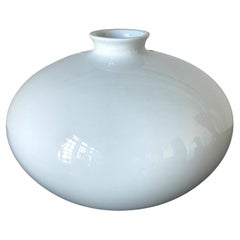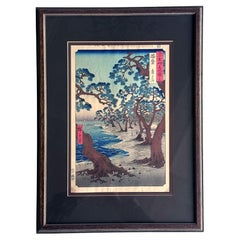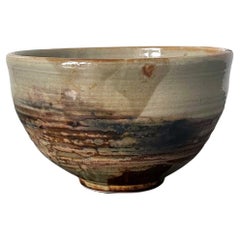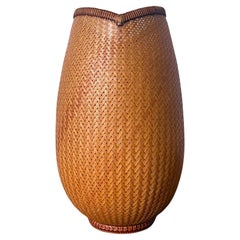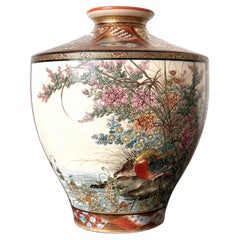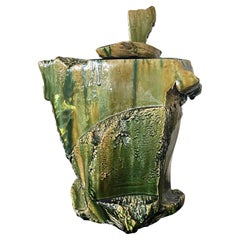Atlanta - Asian Art and Furniture
Late 20th Century Japanese Modern Atlanta - Asian Art and Furniture
Ceramic
20th Century Japanese Edo Atlanta - Asian Art and Furniture
Paper
Late 20th Century American Modern Atlanta - Asian Art and Furniture
Ceramic
21st Century and Contemporary Japanese Organic Modern Atlanta - Asian Art and Furniture
Bamboo, Rattan
Early 1900s Japanese Meiji Antique Atlanta - Asian Art and Furniture
Ceramic
Early 2000s Japanese Modern Atlanta - Asian Art and Furniture
Ceramic
19th Century Chinese Chinese Export Antique Atlanta - Asian Art and Furniture
Elm, Walnut
19th Century Chinese Qing Antique Atlanta - Asian Art and Furniture
Stone
Early 20th Century Japanese Japonisme Atlanta - Asian Art and Furniture
Wood, Lacquer
19th Century Korean Other Antique Atlanta - Asian Art and Furniture
Brass
Early 20th Century Chinese Ming Atlanta - Asian Art and Furniture
Wood, Bamboo
15th Century and Earlier Korean Archaistic Antique Atlanta - Asian Art and Furniture
Ceramic
19th Century Korean Archaistic Antique Atlanta - Asian Art and Furniture
Ceramic
Late 18th Century Japanese Japonisme Antique Atlanta - Asian Art and Furniture
Wood, Lacquer
Early 19th Century Chinese Qing Antique Atlanta - Asian Art and Furniture
Silk
18th Century Japanese Japonisme Antique Atlanta - Asian Art and Furniture
Mother-of-Pearl, Lacquer
15th Century and Earlier Korean Archaistic Antique Atlanta - Asian Art and Furniture
Ceramic
Late 19th Century Korean Other Antique Atlanta - Asian Art and Furniture
Brass
20th Century Korean Folk Art Atlanta - Asian Art and Furniture
Brocade, Silk, Wood, Paper
15th Century and Earlier Chinese Antique Atlanta - Asian Art and Furniture
Jade
19th Century Korean Other Antique Atlanta - Asian Art and Furniture
Metal
Early 19th Century Chinese Chinese Export Antique Atlanta - Asian Art and Furniture
Porcelain
Early 20th Century Japanese Meiji Atlanta - Asian Art and Furniture
Porcelain
19th Century Chinese Qing Antique Atlanta - Asian Art and Furniture
Brocade, Silk, Giltwood
Late 19th Century Japanese Meiji Antique Atlanta - Asian Art and Furniture
Ceramic
Early 20th Century Japanese Meiji Atlanta - Asian Art and Furniture
Ceramic
Early 20th Century Japanese Japonisme Atlanta - Asian Art and Furniture
Wood, Lacquer
1890s Japanese Japonisme Antique Atlanta - Asian Art and Furniture
Textile, Lucite
1890s Japanese Meiji Antique Atlanta - Asian Art and Furniture
Silk, Giltwood
Late 19th Century Chinese Chinese Export Antique Atlanta - Asian Art and Furniture
Stone
Early 20th Century Japanese Japonisme Atlanta - Asian Art and Furniture
Porcelain
Early 1900s Japanese Meiji Antique Atlanta - Asian Art and Furniture
Paper
Early 19th Century Japanese Japonisme Antique Atlanta - Asian Art and Furniture
Stone, Metal
Early 20th Century Japanese Meiji Atlanta - Asian Art and Furniture
Silver
Mid-20th Century Japanese Japonisme Atlanta - Asian Art and Furniture
Silk
19th Century Chinese Qing Antique Atlanta - Asian Art and Furniture
Ceramic
Mid-19th Century Chinese Chinese Export Antique Atlanta - Asian Art and Furniture
Porcelain
Early 20th Century Japanese Meiji Atlanta - Asian Art and Furniture
Copper
Late 19th Century Korean Other Antique Atlanta - Asian Art and Furniture
Brass
15th Century and Earlier Chinese Archaistic Antique Atlanta - Asian Art and Furniture
Marble
19th Century Tibetan Tibetan Antique Atlanta - Asian Art and Furniture
Textile
20th Century Japanese Japonisme Atlanta - Asian Art and Furniture
Cotton, Silk
19th Century Korean Other Antique Atlanta - Asian Art and Furniture
Iron
18th Century Japanese Edo Antique Atlanta - Asian Art and Furniture
Mother-of-Pearl, Lacquer
Late 19th Century Korean Folk Art Antique Atlanta - Asian Art and Furniture
Brocade, Silk, Wood
15th Century and Earlier Korean Archaistic Antique Atlanta - Asian Art and Furniture
Ceramic
Late 19th Century Japanese Meiji Antique Atlanta - Asian Art and Furniture
Ceramic
18th Century Japanese Edo Antique Atlanta - Asian Art and Furniture
Wood, Lacquer
1640s Chinese Antique Atlanta - Asian Art and Furniture
Porcelain
Early 20th Century Japanese Showa Atlanta - Asian Art and Furniture
Silk
19th Century Tibetan Tibetan Antique Atlanta - Asian Art and Furniture
Bronze
1890s Japanese Japonisme Antique Atlanta - Asian Art and Furniture
Fabric, Silk, Lucite
1940s Japanese Japonisme Vintage Atlanta - Asian Art and Furniture
Paper
Late 19th Century Korean Folk Art Antique Atlanta - Asian Art and Furniture
Brocade, Silk, Wood
21st Century and Contemporary American Modern Atlanta - Asian Art and Furniture
Stone
18th Century Korean Archaistic Antique Atlanta - Asian Art and Furniture
Ceramic
15th Century and Earlier Persian Islamic Antique Atlanta - Asian Art and Furniture
Ceramic
Mid-20th Century Japanese Japonisme Atlanta - Asian Art and Furniture
Silk
18th Century Korean Other Antique Atlanta - Asian Art and Furniture
Ceramic
19th Century Korean Other Antique Atlanta - Asian Art and Furniture
Brass
Read More
Symbols of Happiness and Rebirth Adorn This Japanese Satsuma Bowl
Decorated with white cranes and the sought-after thousand-butterflies motif, the Meiji-period vessel offers both a celebration of traditional aesthetics and a clear reflection of the era’s appetite for exquisite export pieces.
Chicago’s Pagoda Red Has a Spirited Mix of Asian Antiques and Bold New Art
For 25 years, gallerist Betsy Nathan has leveraged her keen eye and key connections to bring a unique selection of rare finds to the market.
In L.A., Gallerist JF Chen Has Long Championed Eclectic Blue-Chip Design
Now working alongside his daughter Bianca, dealer Joel Chen has presented a most covetable array of antiques, art and contemporary creations for more than 40 years.
12 Calming Spaces Inspired by Japanese Design
From cherry-blossom-adorned walls paired with glamorous lighting to wood-paneled ceilings above checkerboard-patterned chairs, these 12 spaces seamlessly blend Eastern and Western aesthetics.
Rodrigo Rivero Lake’s Mexico City Showroom Is a Museum-Worthy Trove of Spanish Colonial and Asian Antiques
The dealer and curator has spent the past 50 years amassing a collection of exceptional art, furniture and architectural elements that trace the cultural influence of the Spanish empire from Europe to the Americas and beyond.
16 Refined Asian-Inspired Interiors
These spaces exemplify how Eastern elements elevate a home's decor.
